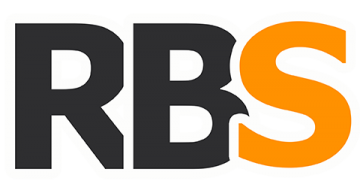Content
Keep most of your costs variable by renting office space instead of buying commercial property and hiring independent contractors instead of full-time employees for certain roles. You can include net burn in your board deckor other investor communications to demonstrate your progress toward profitability. As a metric, it also tells you how much additional monthly revenue you need to break even. Knowing your burn rate helps you understand your business’s cost drivers and decide where to spend your money and which revenue streams to prioritize. The above image is an e-Commerce financial model showing the company’s cash balance over time.
In this context, cost of growth refers to the costs that go into those operational expenses we referred to earlier. If your burn rate is too high, you’ll know which expenses you need to cut. Burn rate is the rate at which a business is “burning” their venture capital. An example of this is the development costs of building an online platform.
Issues proving sustainability of business model
In this scenario, we are assuming that this start-up had $500k in its bank account and just raised $10mm in equity financing – for a total cash balance of $10.5mm. Conceptually, the gross burn is the total amount of cash spent each month, whereas the net burn is the difference between the monthly cash inflows and cash outflows. The burn rate is typically calculated in terms of the amount of cash that the company is spending per month.
What is an example of a burn rate?
At the most basic, burn rate is a measure of negative cash flow (how much money you're losing each month). For example, if your startup spends $10,000 every month on office space, computers, and wages, but sales only amount to $8,000 in that same month, then your burn rate is $2,000 ($10,000 – $8,000).
Include burn rate on your startup CEO dashboard, and display it on a computer monitor or office TV so you can see it every day and immediately detect any significant change. You can also share the dashboard with your executive or financial team via Slack or with sharing links and easily keep your whole team up to date. https://www.scoopearth.com/the-importance-of-retail-accounting-in-improving-inventory-management/ While most entrepreneurs and experts recommend having at least 12 months of cash runway, in more challenged fundraising environments, it could be more prudent to have 18+ months of cash on hand. Keeping your burn rate in check ensures that your company has ample cash runway to continue operating for the long-term.
How to Calculate Gross and Net Burn
This then acknowledges that higher burn rates can be tolerated if it’s having a positive effect. Reduce churn rate → If your company is dealing with crazy churn rates (north of 7%), your revenue is going to take a big hit and your burn rate will go up. OK so you can compute both gross burn rate and net burn rate for your retail accounting business, but which is better or more frequently used? If you’re talking to a peer, investor, or mentor and they ask simply, “what is your burn rate?”, you can assume they’re referring to your gross burn rate. Focus on client retention to reduce customer acquisition costs and leave more money in your bank account.
- This may be more expensive in the short term, but it offers greater flexibility to increase or decrease the work force in case of exponential growth or sudden downtimes.
- In this case, you divide your operating income by the amount of cash initially invested in the business.
- Another option is to reduce your expenses by cutting back on frivolous spendings, such as travel or entertainment for employees.
- It is possible for a company to project growth that will improve its economies of scale.
- That means if your burn rate is $25,000 per month, you’d want to have at least $300,000 in available cash.
Accurate burn rates provide a clear picture of a project, but they aren’t set in stone. Like any calculation of in-progress work, burn rates can change, both due to actions taken by teams as well as due to inaction. Burn rates are focused on financial consumption for a business, so while it can be applied to a company as a whole, calculating burn rates for individual projects can help you improve your daily processes. This distinction is very important because it impacts a company’s bank account and, thereby, its runway for growth.
Survival Metrics: Getting to Grips with the Startup Burn Rate
Every fundraising results in dilution for founders and existing investors. The aim is, therefore, always for startups to reach a point where their operations finance activities with as few rounds as possible. Investors generally derive their expectation from the forecasted burn that was provided to them during the funding round. The relation between cash flows, net and gross burn can be visualized below.
A company’s gross burn is the total amount it’s spending on operational expenses each month . In our example above, a startup spending $30,000 a month on staff salaries, office space, and a cool new ping pong table would have a gross burn rate of $30,000 per month. Burn rate indicates how quickly your company is using or “burning” your start-up capital before it starts generating a positive cash flow. In other words, it’s a measure of how long your business can operate until it has to seek more capital. Burn rate is calculated by comparing your cash balance at the start versus the end of the period and then dividing that difference by the number of months.
How do you calculate burn rate in P&L?
Net Burn Rate
This is the same figure as Net Income on your monthly P&L statement. To find your average net burn rate, add up the results of your monthly calculations, or monthly Net Income figures from your P&Ls, and divide by the number of months included.

Recent Comments